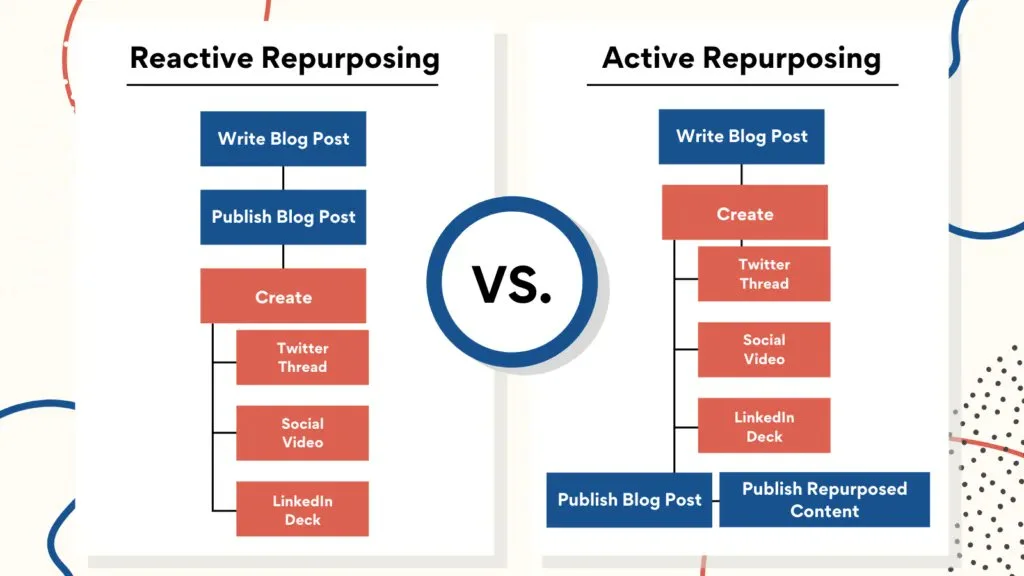11 Quick and Long-Term SEO Tips to Get Your Site to Rank
January 20, 2022 9 min read

SEO is a technical endeavor, making it seem pretty intimidating, but it doesn’t have to be. It’s also often considered a long-term strategy, one that you don’t see results from immediately. However, there are simple steps you can take today (yes, today) that will allow you to see pretty astonishing results in less time than you’d think.
While most SEO strategies can take time to implement, there are some that can be done while you have a 15-minute break between tasks. A small effort today and another next Friday, for example, can help give you that nudge in the right direction. You no longer have to put off your SEO efforts because you simply don’t have the time to prioritize them.
Let’s talk specifics.
Quick SEO Tactics You Can Implement Today
1. Reshare Evergreen Content Via Your Newsletter
Next time you send out your email newsletter, share evergreen content from your site. It’s easy to dismiss older posts as less important, but if they have relevant information that your followers will care about, they’re definitely worth resharing.
Plus, that older content has existed longer, meaning it’s had more time to rank. The more time that people spend on your older articles, the higher your site will rank because it shows Google that you’re providing users with content they crave.
2. Check-In On Evergreen Content
Along with sharing evergreen posts, put a strategy in place to update older blog content on your site once or twice a year. While actually updating the content can take quite some time, you can at least see which content needs an update rather quickly if you use the right tools.
Run your evergreen content through an SEO editing tool to see how well it ranks for its designated keyword. This test only takes seconds to generate results, and it provides you with a list of words or phrases to add that will help your content rank higher for the desired term. You can schedule the update at a later time, but at least you’ll know which articles need work and which are doing okay in just a few moments.
Another great idea is to check your older, evergreen content for any broken or dated links. Ebnu Sudarso from Milkwhale does this as often as possible, stating, “Removing broken links from your site is a quick and effective way to boost your SEO in 30 minutes or less. You can use several tools, such as Ahrefs, Google Webmaster, or Chrome extensions, such as Check My Links, to find broken links. If you have access to your site, removing a broken link should take you less than half an hour.”
Natasha Rei from Explainerd uses the same approach. She recommends having a link checker plugged into your website so you won’t have to run a test. However, give it some time before checking the results. “We check the result at least three months after fixing the broken link. Since live links need validation from the Google search engine, the link may not quickly appear back on the SERPs right after fixing the problem.”
3. Link to Authoritative Sites
If you’re a studious writer who researches and credits your sources using authoritative sites, Google will reward you. When you link out to a site that has a high rank on Google, it means that the site is already vetted and approved as a quality source for content. By association, Google will take your site into account as a reputable source on the topic you’re covering.
Plus, there’s nothing wrong with being friendly with other sites that are in your industry creating content similar to yours. If anything, it builds community and trust with your followers. And, if you reach out to that site to let them know you’ve linked to them, they may help share it out to a wider audience.
So next time you sit down to write a new post, don’t be afraid to link out to sites that inspire you or provide important research for your posts. Who knows—maybe they will link back to you too, and both of you will benefit from the exchange.
4. Enhance Your Site with Multimedia Content
Is your site mostly filled with text-based content? One way to potentially rank higher in search results is to mix up the type of content you share on your site. For example, embed relevant videos into your blog posts or repurpose a blog post into a video.
Google search ranking takes into account how much time people spend on your site. Multimedia content like videos, podcasts, GIFs, or images, could increase the number of time users spend on your site consuming content.
If you break up your text-based content with multimedia, it can make your content easier to read and more engaging. People don’t always have time to skim an article, but they may take a few minutes to watch a video or listen to a podcast.
5. Check Duplicate Title Elements
Andre Oentoro from Breadnbeyond swears by this method.
“You can use Google Webmaster to see whether there are duplicate pages, keyword cannibalization, or bad title element structure. If there are any issues, you can write unique title elements, create redirects, or include another unique keyword. It doesn’t take 20 minutes for us to do this quick yet powerful strategy.”
Use this strategy twice a year to eliminate any duplicate content and other issues that could be killing your SEO rankings.
While quick tactics are great to have in your back pocket (especially when you’ve found yourself with a couple of free minutes), the truth is that some hard-hitting strategies require a little more time, patience, and effort. As Dmitrii Kustov, founder of Regex SEO, opines, content marketing is a long-term game. The blog post you published today will most likely start bringing quality traffic to your site after six months.
The simple truth is that sometimes, it can take longer to see results, especially if your website is brand new. However, if you’re planning on staying in business for years (who isn’t?), you’ll be grateful in the future for all the SEO work you put in today.
Check out some SEO approaches that will require a bit more time to implement but can yield some impressive returns.
Long-Term SEO Tactics That are Worth the Effort
1. Put UX First When Designing Your Website
It takes 0.05 seconds for a visitor to form an opinion about your website. Yes – 50 milliseconds for the visitor to decide whether to stick around or dash out. To win over your web visitor and inspire them to stay, your website should offer a great first impression.
To that end, conceptualize your web design with your target audience in mind. In other words, implement the UX qualities your customers want.
Keep it simple, implement an immersive and intuitive user experience, and remove excessive barriers to content. Besides the aesthetics, consider technical details like load speed and mobile-friendliness.
Remember: more than 52% of web traffic comes from mobile phones, so mobile-friendliness isn’t just a “nice-to-have”; it’s a must-have. In addition, if your website is taking longer than 10.3 seconds on desktop and 27.3 seconds on mobile to load, you’re likely losing the majority of visitors to your site.
This tip isn’t just for new businesses just starting out with their website creation. If your website has been live for a while, it never hurts to routinely review the layout and look at it from a UX standpoint to ensure it’s still working in your (and your customers’) favor.
2. Conduct a Technical SEO Audit
Technical SEO covers elements that affect the way search engine spiders crawl your website. It entails things such as:
- Crawling, rendering, and indexing
- Hreflang
- Website architecture
- XML sitemaps
- 404 pages and 301 redirects
You can have a stunning website with the best content, but if most of these aspects are messed up, you’re not going to rank. So, to better your chances of ranking in SERPs, fix your technical SEO.
If you’re comfortable with the technical stuff, head over to the Google Search Console and evaluate your coverage report to spot indexing issues. Alternatively, use software like Screaming Frog to run a full crawl to find indexing errors. If all of this sounds like jargon, there are plenty of technical SEO agencies and freelancers who specialize in helping with these issues, so seek out a pro if you’re in doubt or don’t feel expert enough to tackle.
3. Create a Keyword Strategy
If your blog posts are arrows, your keyword strategy is the bow. Without a keyword strategy guiding your web content, you’ll just be hurling arrows in different directions and missing your target.
A strong keyword strategy takes the time to unearth the phrases and terms your audience uses based on their search intent. It also identifies which keywords you’ll have the highest probability of ranking for, so you’re not wasting your time and money on content that will likely be relegated to page two and beyond of SERPs.
4. Practice Active Content Repurposing
Content repurposing is a game-changer in content marketing. It means converting content assets into different formats and publishing them somewhere else. For example, you could turn a blog post into a Twitter thread or LinkedIn deck.
You can create long-term value for your website by repurposing content, whether it’s active or reactive. With active repurposing, you write a new blog post and turn it into different content formats before publishing it on your site. On the other hand, reactive repurposing means taking an existing piece of content and turning it into different formats.
Active repurposing works best with a new piece of content, while reactive is a great way to turn old content assets into goldmines.
Ross Simmonds, founder at Foundation Inc, states that customers who follow you today on social platforms and other marketing channels aren’t all the same people who followed you years ago. If you turn a one-year-old blog post into a LinkedIn deck, it becomes instantly visible to your newest LinkedIn followers.
5. Implement Proper Internal Linking
Internal links are links on your web pages or blog posts that point readers to other pages on your website. Besides helping web visitors get around your website with ease, they provide long-term SEO value.
The links and their corresponding descriptive text give search engines a path to follow along as they crawl your website. Doing so enables search engines to understand which pages are important and what they are about. This helps search engines prioritize web pages to rank your website better.
If you’re getting started, try building topic clusters around a pillar page. This instantly brings value to your users by making it easy for them to find all of your content that’s centered on a specific umbrella topic, but the search engines love it, too.
6. Build External Links
An external link or backlink is a hyperlink posted on another domain pointing readers to your website. The quantity and quality of external links impact your website ranking.
So, how many backlinks does a web page need to rank? There’s no definite answer to this question. The number of backlinks a page needs depends on:
- SEO competition for the target keyword
- Your domain authority
- Competitors in your industry
And quality is just as important as the quantity of backlinks. Backlinks should come from high domain authority websites whenever possible, or else they might damage the reputation of your site.
Keep in mind even after you rank, you’ll need to continue adding backlinks to the page to maintain the high rankings. Studies have shown that most top-ranking pages continue to earn backlinks at the rate of +5% to 14.5% per month.
Pair these quick SEO tips (that shouldn’t take longer than an hour to implement) with these more long-term efforts that require a little more elbow grease, and you’ll have yourself a well-rounded SEO plan of attack. The result will be more site traffic, increased rankings, and the ability to appear in search results more frequently for key terms.








